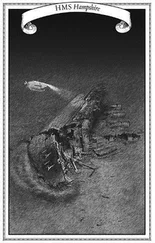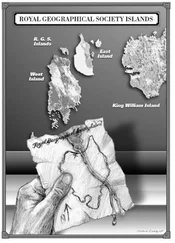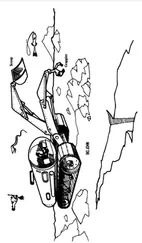"Their civilization was utterly destroyed when a comet struck the earth around 7000 B.C. and caused a worldwide cataclysmic disaster. That's when the land bridge from Gibraltar to Morocco was breached and the Mediterranean became a sea. Shorelines were inundated and changed forever. Within the time it takes for a raindrop to fall from a cloud, the sea people, their cities, and their entire culture were erased from the earth and lost until now."
"You deciphered all that from the inscriptions?"
"That and more," Yaeger answered earnestly. "They describe the horror and suffering in vivid detail. The impact of the comet was gigantic, sudden, appalling, and deadly. The inscriptions go on to tell of mountains shaking like willows in a gale. Earthquakes shook with a magnitude that would be inconceivable today. Volcanoes exploded with the combined force of thousands of nuclear bombs, filling the sky with layers of ash a hundred miles thick. Pumice blanketed the seas as dense as ten feet. Rivers of lava buried most of what we call the Pacific Northwest. Fires spread under hurricanelike winds, creating towering clouds of smoke that blanketed the sky. Tidal waves, perhaps as much as three miles high, swept over the land. Islands vanished, buried under water for all time. Most of the people and all but a handful of animals and sea life disappeared in a time span of twenty-four hours."
Giordino put his hands behind his head and looked up at the ceiling, trying to picture in his mind the terrible devastation. "So that explains it- the sudden extinction in the Americas of the saber-toothed tiger, the humped-back camel, the musk oxen, that giant bison with a horn spread of six feet, the woolly mammoth, the small shaggy horse that once roamed the plains of North America. And the instant turning to stone of clams, soft jellyfish, oysters, and starfish- you remember we discovered them during projects coring under the sediments. These discrepancies have always been an enigma to scientists. Now maybe they can tie it to the comet's impact."
Sandecker stared at Giordino with an appraising look in his eyes. The short Etruscan possessed a brilliant mind, but worked to conceal it behind a sardonic wit.
Stevens pulled out his pipe and toyed with it. "It's well known in the scientific community that mass global extinctions of animals weighing over a hundred pounds occurred in unison with the end of the last ice age, about the same time as the comet's impact. Mastodons were found preserved by ice in Siberia, the food undigested in their stomach, establishing the fact that they died quite suddenly, almost as if sent into an instant deep freeze. The same with trees and plants that were found frozen while in leaf and in bloom."
The degree of horror could not be completely imagined by anyone sitting at the table. The scope was simply too enormous for them to conceive.
"I'm not a geophysicist," said Stevens quietly, "but I cannot believe that a comet striking the earth, even a large one, could cause such tremendous destruction on such a massive scale. It's inconceivable."
"Sixty-five million years ago, a comet or asteroid killed off the dinosaurs," Giordino reminded him.
"It must have been one enormous comet," said Sandecker.
"Comets can't be measured like asteroids or meteors that have a solid mass," Yaeger lectured. "Comets are a composite of ice, gas, and rocks."
Pat continued reciting the story of the inscriptions without reading from her notes. "Some of the inhabitants of Earth who survived lived, farmed, and hunted in the mountains and high plains. They were able to escape the aftermath of horror by going underground or hiding in caves, existing on whatever pitiful vegetation and flora that could revive and grow under unhealthy conditions, along with the few animals left to hunt. Many died of starvation or from the gaseous clouds smothering the atmosphere. Only a scant handful of the Amenes who happened to be on high ground during the tidal waves survived."
"The story of what has come down to us as the deluge," clarified Stevens, "has been recorded by Sumerian tablets dating back five thousand years in Mesopotamia- the legend of Gilgamesh and the flood predates the biblical story of Noah and the ark. Stone records of the Mayans, written records by Babylonian priests, legends handed down by every cultural race of the world, including the Indians throughout North America, all tell of a great inundation. So there is little doubt the event actually occurred."
"And now," said Yaeger, "thanks to the Amenes, we have a date of approximately 7100 B.C."
"History tells us that the more advanced the civilization," Stevens commented, "the more easily it will die and leave little or nothing of itself behind. At least ninety-nine percent of the grand total of ancient knowledge has been lost to us through natural disasters and man's destruction."
Pitt nodded in agreement. "A golden age of ocean navigation seven thousand years before Christ, but nothing to show for it but inscriptions in rock. A pity we can't have more to inherit from them."
Sandecker exhaled a cloud of blue smoke. "I sincerely hope that won't be our fate."
Pat took over from Yaeger. "Those who remained of the Amenes formed a small cult and dedicated themselves to educating the remaining Stone Age inhabitants in arts and written communication, as well as teaching them how to construct substantial buildings and ships to sail the seas. They tried to warn future generations of another coming cataclysm, but those who came later and had not lived during the comet's destruction and horrible aftermath could not bring themselves to accept that such a traumatic episode from the past would repeat itself. The Amenes realized the awful truth would soon become lost in the mists of time, recalled only in a score of myths. So they attempted to leave a legacy by building great monuments of stone to last throughout the centuries, engraved with their message of the past and future. The great megalithic cult they created became widespread and lasted for four thousand years. But time and the elements eroded the inscriptions and erased the warnings.
"After the Amenes finally died out, centuries of paralysis set in before the Sumerians and Egyptians began to emerge from primitive cultures and gradually build new civilizations, using bits and pieces of the knowledge from the distant past."
Pitt tapped a pencil on the table. "From what little I know on the subject of megaliths, it would seem that later cultures, having lost the original intent of the Amenes through the centuries, used monumental structures as temples, tombs, and stone calendars, eventually building thousands of their own."
"In studying the available data on megaliths," said Yaeger, "the very early structures show that the Amenes had a distinct form of architecture. Their style of building was mostly circular, with triangular-shaped stone blocks cut like interlocking pieces of a jigsaw puzzle, making them almost impervious to any movement of the earth, regardless of how severe."
Stevens spoke very deliberately, as he replaced the globe in its socket inside the black skull. "Thanks to the efforts of Mr. Yaeger and Dr. O'Connell, it's beginning to look as if elements of the Amenes culture and ancient heritage were passed through the centuries and eventually absorbed by the Egyptians, Sumerians, the Chinese, and Olmecs, who preceded the Mayans, and both the Asian Indians and the American Indians. The Phoenicians, more than any other civilization, took up the torch of deep-ocean navigation.
"Their revelations also help to explain why most of the gods and deities from nearly every later civilization in every part of the world came from the sea, and why all the gods setting foot in the Americas came from the east while the gods appearing in the early European cultures came from the west."
Читать дальше












